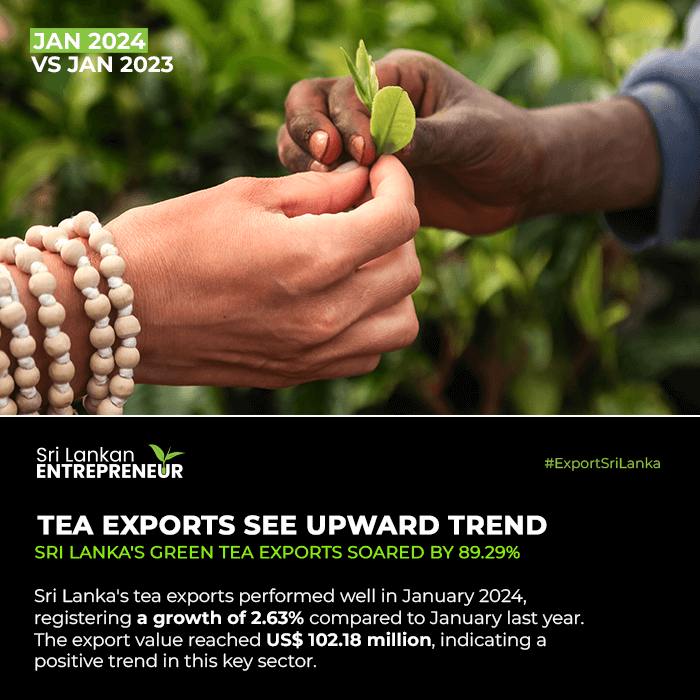Sri Lanka’s export performance in January 2024 offered a glimpse of both promise and challenge, according to a recent report by the Sri Lanka Export Development Board. While overall merchandise exports dipped slightly (0.77%) compared to January 2023, a closer look reveals a quiet a lot of promise.
Agricultural Exports Inch Upward
A bright spot emerged in the form of agricultural exports, which witnessed a modest increase of 3.58% to reach US$ 225.43 million. This indicates a potential for growth in this sector, offering opportunities for Sri Lankan agricultural businesses to tap into global markets.
Industrial Exports Face Headwinds
However, industrial exports faced a setback, declining by 2.08% to US$ 744.77 million. This decline requires closer examination to pinpoint the contributing factors.
Some potential reasons for decline in specific product categories are as follows.
- Apparel and Textiles: A traditionally strong export, this sector might be grappling with increased competition or a slowdown in global demand.
- Spices: This aromatic export segment might be facing challenges related to pricing or competition from other producers.
- Electrical Components: This sector’s decline could be due to fluctuations in global supply chains or a shift in technological preferences.
Despite some Sri Lankan exports facing challenges in 2024, impressive gains in other areas nearly brought the overall figure in line with 2023 levels. With a strong performance in tourism, this combined impact could push the economy in a very positive direction.
Some areas where we are seeing a lot of promise are as follows.


- Tea: This quintessential Sri Lankan product continues to find favor internationally, with a 2.63% year-on-year increase in export earnings.
- Rubber and Rubber Products: This sector experienced growth of 6.92% and 12.87% for rubber and rubber finished products respectively, indicating potential in these areas.
- Coconut Products: Coconut-based products led the growth, with a 16.74% increase overall. Within coconut products, kernel products (like oil, cream, and milk) saw the biggest rise (around 38%). Shell products (like activated carbon) also grew significantly (over 42%).
Export Destinations: A Shift in Focus
The United States remained the top export destination for Sri Lanka. However, it’s noteworthy that exports to the US also declined in January 2024. Additionally, we see a similar decline in exports to the European Union. This highlights the need for Sri Lankan exporters to diversify their export markets and explore new opportunities in emerging economies.
The Road Ahead
While overnight miracles aren’t achievable, the a simple focus on the following can help Sri Lankan businesses make the most of 2024:
- Boosting Agricultural Exports: Continued focus on improving agricultural productivity and quality can solidify Sri Lanka’s position as a reliable exporter of agricultural goods.
- Revitalizing Industrial Exports: Identifying the specific challenges faced by key industrial exports like apparel and textiles is crucial to develop targeted solutions and regain market share.
In conjunction with these short-term measures, Sri Lanka should implement long-term plans to ensure sustainable export growth beyond 2024.
- Investing in infrastructure development to improve logistics and connectivity.
- Encouraging research and development in agriculture and manufacturing to create new and improved products.
- Building a skilled workforce to meet the demands of the global marketplace.
- Diversifying export markets to reduce dependence on traditional destinations.
- Venturing in to new areas of global demand.
By implementing these measures alongside long-term plans, Sri Lankan entrepreneurs can navigate the current complexities and propel the country towards sustainable export growth.







